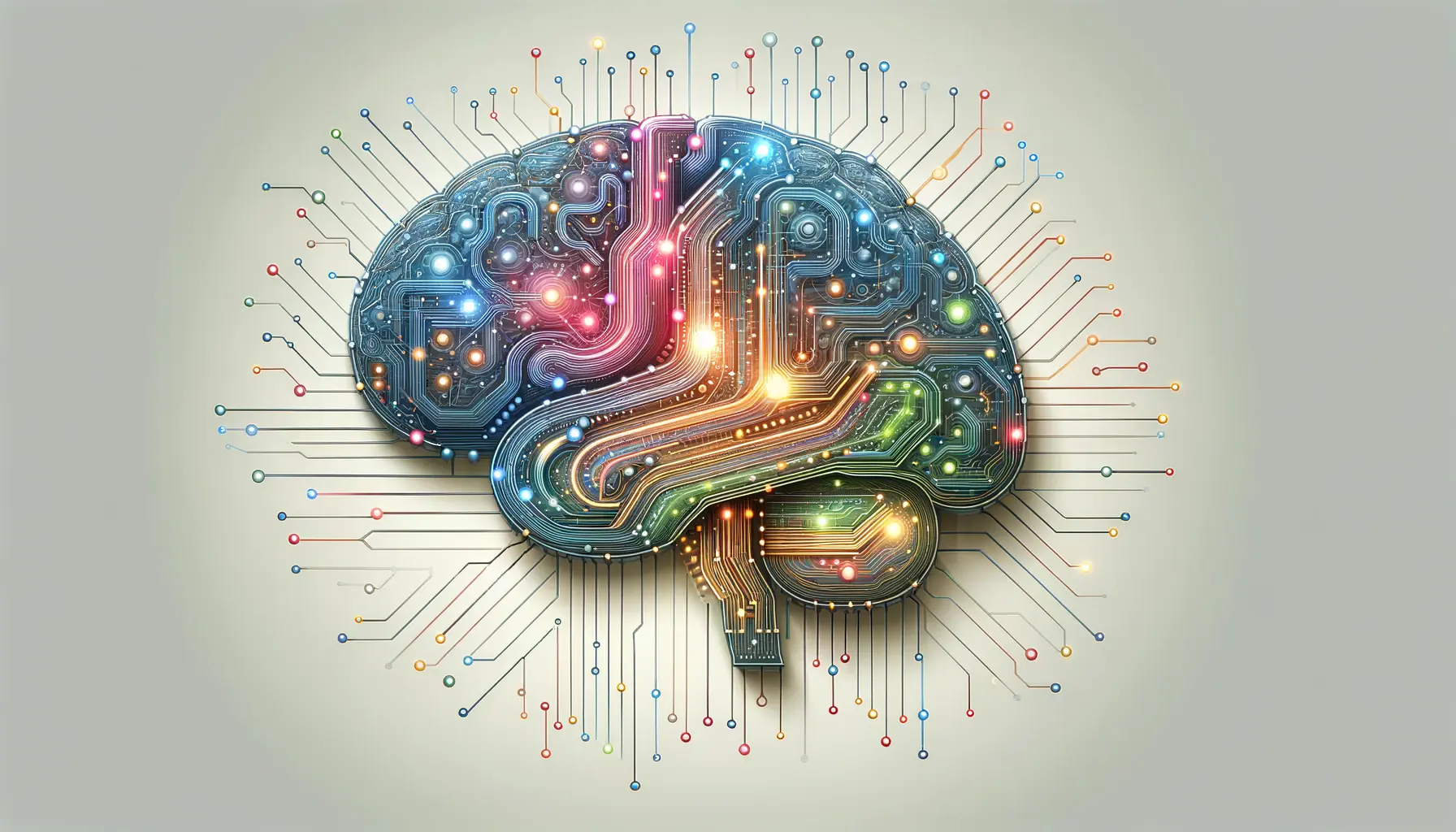Google’s Bard and its analytics, the tech giant’s foray into the realm of generative AI chatbots, represents a significant leap forward in how we interact with information on the internet.
Unlike traditional search engines that return a list of links, Bard seeks to engage users in a conversational manner, providing answers and insights in a more intuitive and human-like way.
This innovative approach to information retrieval and interaction has not only captivated the curiosity of tech enthusiasts but also sparked a broader discussion on the future of AI in our daily lives.
The development and launch of Bard by Google mark a pivotal moment in the ongoing evolution of artificial intelligence.
As a direct competitor to OpenAI’s ChatGPT, Bard is powered by Google’s cutting-edge LaMDA technology, which stands for Language Model for Dialogue Applications.
This technology enables Bard to understand and generate human-like text, making it a powerful tool for a wide range of applications, from simplifying complex topics to sparking creativity in brainstorming sessions.
- Understanding Bard’s Core Technology
- The Evolution of User Interaction with Bard
- Impact of Bard on SEO and Content Creation
- Analytics and Performance Measurement
- Future Developments and Enhancements
- Privacy and Ethical Considerations
- Collaboration and Integration with Other Technologies
- Embracing the Future with Google’s Bard
- FAQs on Google’s Bard: Insights and Capabilities
Understanding Bard’s Core Technology
LaMDA: The Engine Behind Bard
At the heart of Google’s Bard lies LaMDA, Google’s proprietary language model designed specifically for dialogue applications.
LaMDA’s ability to process and generate natural language has set new standards for AI chatbots.
Unlike its predecessors, LaMDA can engage in more nuanced and contextually rich conversations, mimicking the ebb and flow of human dialogue with remarkable accuracy.
This leap in technology is not just a technical achievement but a step towards more natural and intuitive human-computer interactions.
LaMDA’s development was guided by the principle of creating a model that understands the nuances of human language, including humor, irony, and cultural references.
This understanding allows Bard to provide responses that are not only accurate but also engaging and informative.
The implications of this technology extend far beyond simple question-and-answer scenarios, opening up possibilities for educational tools, creative writing aids, and even mental health support systems.
Measuring Bard’s Success Through Analytics
The success of Google’s Bard, like any other technological innovation, is closely monitored through a variety of analytics.
These metrics not only measure user engagement and satisfaction but also help in refining the AI model for better performance.
Key performance indicators (KPIs) for Bard include response accuracy, user retention rate, and the ability to handle a wide range of queries without defaulting to generic responses.
Moreover, the analytics behind Bard also focus on the chatbot’s ability to learn from interactions.
Each conversation with a user provides valuable data that can be used to improve Bard’s understanding of human language and its ability to engage in meaningful dialogue.
This continuous learning process is crucial for maintaining Bard’s relevance and effectiveness as a conversational AI.
The analytics behind Google’s Bard are crucial for measuring its success and ensuring its continuous improvement.
The Evolution of User Interaction with Bard
The introduction of Bard by Google has significantly altered the landscape of user interaction with AI.
This evolution is not just about the technology behind Bard but also how users perceive and engage with AI in their daily lives.
The shift towards conversational AI represents a move from transactional interactions, characterized by specific queries and responses, to a more relational approach, where the AI understands context and history.
As users become more accustomed to Bard, the nature of their queries has evolved.
Initially, users tested its capabilities with straightforward questions or requests for information.
However, as confidence in Bard’s conversational abilities grows, users are increasingly engaging in more complex and nuanced dialogues, seeking not just answers but insights and ideas.
Key Areas of User Interaction
- Personalized Learning: Bard has become a tool for personalized education, helping users explore topics in depth through interactive dialogue.
- Creative Assistance: From writing help to brainstorming sessions, Bard serves as a creative partner, offering suggestions and sparking new ideas.
- Mental Health Support: By providing empathetic responses and engaging in meaningful conversations, Bard is being explored as a support tool for mental well-being.
Challenges in User Adoption
Despite the advancements, the adoption of Bard faces challenges.
Users’ trust in the accuracy of Bard’s responses and concerns about privacy and data security are significant hurdles.
Moreover, the transition from traditional search methods to conversational AI requires a shift in user behavior, which takes time and education.
To address these challenges, Google has implemented robust data protection measures and continuously educates users about Bard’s capabilities and limitations.
The goal is to build a user-friendly platform that respects privacy while offering valuable and reliable assistance.
The evolution of user interaction with Bard highlights the growing role of conversational AI in our lives, promising a future where technology understands us better than ever before.
Impact of Bard on SEO and Content Creation
The advent of Google’s Bard has profound implications for the fields of Search Engine Optimization (SEO) and content creation.
As Bard aims to provide direct answers and insights, content creators and marketers are reevaluating their strategies to align with the nuances of conversational AI.
This shift necessitates a deeper understanding of how Bard interprets and retrieves information, influencing the way content is structured and presented online.
For SEO professionals, Bard introduces both challenges and opportunities.
The traditional focus on keywords and search engine rankings is expanding to include the optimization of content for conversational queries.
This evolution reflects a broader trend towards more natural and intuitive user experiences, where the quality of information and its relevance to conversational contexts become paramount.
Strategies for Optimizing Content for Bard
- Focus on Natural Language: Content should be written in a way that mirrors natural conversation, incorporating questions and answers that Bard is likely to engage with.
- Enhance Content Relevance: Providing comprehensive and contextually relevant information increases the likelihood of being sourced by Bard in its responses.
- Utilize Structured Data: Implementing schema markup can help Bard understand the context and content of web pages more effectively.
Challenges in Content Visibility
As Bard seeks to directly answer users’ queries, the traditional click-through to websites may decrease, posing challenges for content visibility and traffic.
Content creators are thus tasked with finding innovative ways to ensure their content remains discoverable and engaging in a Bard-dominated search landscape.
To navigate these challenges, content creators are exploring new formats and platforms, as well as optimizing for voice search and other AI-driven discovery methods.
The goal is to create content that not only ranks well but also provides value in the conversational exchanges facilitated by Bard.
Adapting to Bard’s influence on SEO and content creation requires a strategic approach focused on quality, relevance, and conversational engagement.
Analytics and Performance Measurement
Understanding and measuring the performance of Google’s Bard is crucial for its continuous improvement and for businesses to adapt their strategies accordingly.
Analytics play a vital role in this process, offering insights into how users interact with Bard and the accuracy of its responses.
Performance measurement encompasses various metrics, including response accuracy, user engagement, and satisfaction levels.
For businesses and content creators, analyzing these metrics provides valuable data on user behavior and preferences.
This information is instrumental in optimizing content for Bard, ensuring it meets the evolving needs of users and aligns with Google’s focus on delivering accurate, relevant, and engaging information.
Key Performance Indicators for Bard
- User Engagement: Tracking how users interact with Bard, including the types of queries asked and the depth of conversations, helps in understanding its utility and areas for enhancement.
- Response Accuracy: Measuring the correctness of Bard’s answers is essential for assessing its reliability as an information source.
- User Satisfaction: Surveys and feedback mechanisms gauge user satisfaction, providing direct insights into Bard’s performance from the user’s perspective.
Optimizing Content Based on Analytics
Armed with analytics, content creators can tailor their strategies to better serve their audience’s needs.
By understanding the topics and questions users are bringing to Bard, creators can produce content that directly addresses these interests.
Additionally, analyzing the language and phrasing of successful interactions with Bard can guide the optimization of content for conversational AI, making it more likely to be referenced or used in responses.
This strategic use of analytics not only enhances the visibility and relevance of content in the age of conversational AI but also ensures that businesses remain competitive in a rapidly evolving digital landscape.
By closely monitoring Bard’s performance and user engagement, content creators and SEO professionals can stay ahead of trends and continuously refine their approaches to meet the demands of modern internet users.
Effective use of analytics is key to maximizing the benefits of Bard for both users and content creators, driving forward the evolution of digital content and SEO strategies.
Future Developments and Enhancements
The trajectory of Google’s Bard is set towards continuous development and enhancement, with Google committed to refining its capabilities and expanding its applications.
The future of Bard is likely to see significant advancements in AI technology, further blurring the lines between human and machine communication.
These developments are not just technical challenges but also opportunities to redefine how information is accessed and utilized in our daily lives.
As Bard evolves, it is expected to become more integrated into various Google services and platforms, offering a seamless and intuitive user experience across the digital ecosystem.
This integration will likely extend Bard’s utility beyond simple information retrieval to more complex tasks and decision-making processes, making it an indispensable tool for a wide range of personal and professional applications.
Expanding Bard’s Knowledge Base
- Enhancing language models to cover more languages and dialects, making Bard accessible to a broader global audience.
- Incorporating real-time data and updates, allowing Bard to provide timely and contextually relevant information.
- Deepening domain-specific knowledge to improve performance in specialized fields such as medicine, law, and engineering.
Improving User Experience
- Refining conversational capabilities to make interactions with Bard more natural and engaging.
- Introducing personalized responses based on user history and preferences, while ensuring privacy and data protection.
- Enhancing Bard’s ability to understand and interpret complex queries, providing more accurate and comprehensive answers.
The future developments and enhancements of Bard are poised to revolutionize the way we interact with AI, making it a more integral part of our daily lives.
By focusing on expanding its knowledge base and improving user experience, Google aims to not only advance Bard’s technological capabilities but also to enrich the human-AI relationship, fostering a future where technology empowers and enhances human potential.
The ongoing evolution of Bard signifies Google’s commitment to pushing the boundaries of AI, promising a future where technology understands and interacts with us in more meaningful ways.
Privacy and Ethical Considerations
As Bard continues to evolve, privacy and ethical considerations remain at the forefront of its development.
Google’s commitment to responsible AI development emphasizes the importance of transparency, security, and respect for user privacy.
The integration of Bard into everyday life brings with it a set of challenges and responsibilities, ensuring that users’ data is protected and that the AI operates within ethical boundaries.
The conversation around AI ethics is complex, involving questions about data usage, bias in AI models, and the potential for misuse.
Google has implemented rigorous protocols to address these concerns, but the dialogue with users and stakeholders is ongoing.
Ensuring Bard’s ethical use and safeguarding privacy are critical for maintaining user trust and fostering a positive relationship between humans and AI.
Addressing AI Bias and Fairness
- Continuously auditing and refining AI models to identify and mitigate biases, ensuring Bard’s responses are fair and unbiased.
- Engaging with diverse communities to understand and incorporate a wide range of perspectives, enhancing Bard’s inclusivity.
Enhancing Data Security and Privacy
- Implementing state-of-the-art encryption and security measures to protect user data from unauthorized access.
- Providing users with clear controls over their data, including the ability to review, modify, or delete their information.
The ethical development and deployment of Bard are not just technical challenges but also moral imperatives.
As Bard becomes more embedded in our digital lives, Google’s approach to privacy and ethics will play a crucial role in shaping the future of conversational AI.
By prioritizing these considerations, Google aims to create a technology that not only advances human knowledge and capabilities but also respects our values and rights.
Navigating the ethical landscape of AI development is essential for building a future where technology like Bard enhances our lives while upholding our principles and protecting our privacy.
Collaboration and Integration with Other Technologies
The potential of Google’s Bard extends far beyond its current capabilities, with future prospects pointing towards extensive collaboration and integration with other technologies.
As Bard evolves, its ability to interact with and enhance other platforms and tools could redefine the technological ecosystem, creating a more interconnected and intelligent digital environment.
Integration with IoT devices, smart home systems, and workplace productivity tools are just the beginning.
Bard’s conversational AI could become a central component in managing our digital lives, offering a seamless interface for interacting with various technologies through natural language.
This level of integration would not only enhance user experience but also open up new avenues for automation and personalization.
Potential Areas for Integration
- Smart Home Devices: Bard could act as a central hub for controlling smart home devices, offering intuitive voice commands for managing lighting, temperature, and security systems.
- Workplace Productivity: Integration with productivity tools and platforms could streamline workflows, with Bard assisting in scheduling, email management, and document creation.
- Educational Platforms: Bard’s capabilities could be harnessed to create interactive learning experiences, offering personalized tutoring and support for students.
Enhancing Collaborative Efforts
- By working closely with developers and third-party platforms, Google can ensure Bard’s integration is smooth and beneficial across different technologies.
- Open APIs and development kits could encourage innovation, allowing developers to create custom solutions that leverage Bard’s conversational AI.
The collaboration and integration of Bard with other technologies represent a significant step towards a more intuitive and intelligent digital future.
As Bard becomes more capable and versatile, its role in our daily lives is set to expand, offering new ways to interact with the digital world.
Google’s vision for Bard is not just about creating a conversational AI but about building a platform that enhances and simplifies the human-technology interface.
The future of Bard lies in its ability to collaborate and integrate with a wide range of technologies, paving the way for a more connected and intelligent digital ecosystem.
Embracing the Future with Google’s Bard
The journey through the analytics behind Google’s Bard unveils a landscape where technology and human interaction converge in unprecedented ways.
Bard, as a pioneering conversational AI developed by Google, stands at the forefront of this evolution, promising to redefine our digital interactions.
The implications of Bard’s development and integration into our daily lives stretch far beyond mere convenience, hinting at a future where AI assists in fostering deeper understanding, creativity, and efficiency.
The Path Forward
As we look towards the horizon, the potential of Bard and conversational AI as a whole is boundless.
The continuous enhancements in AI technology, coupled with Google’s commitment to ethical standards and user privacy, set the stage for a future where AI and humans coexist in harmony.
The integration of Bard with other technologies and platforms will likely catalyze new innovations, making technology more accessible and intuitive for users worldwide.
Key Takeaways
- Bard’s impact on SEO and content creation underscores the need for adaptability in digital strategies.
- The analytics behind Bard provide critical insights for continuous improvement and user engagement.
- Privacy and ethical considerations remain paramount as Bard becomes more ingrained in our digital experiences.
- The potential for Bard’s integration with other technologies promises a more interconnected and intelligent digital ecosystem.
In conclusion, Google’s Bard represents a significant milestone in the journey towards a more intelligent and intuitive digital future.
By harnessing the power of conversational AI, Bard not only enhances our ability to access and interact with information but also opens up new avenues for creativity and innovation.
As we continue to explore the capabilities and potential of Bard, it is clear that the future of digital interaction is bright, with conversational AI leading the way towards a more connected and understanding world.
FAQs on Google’s Bard: Insights and Capabilities
Explore the most common inquiries about Google’s innovative AI chatbot, Bard, and gain insights into its functionalities and potential impact.
Bard can retrieve information, summarize content, brainstorm ideas, and generate text for a wide range of queries and creative tasks.
Initially, Bard was available in the U.S. and U.K. for users who signed up, aiming for a broader rollout to enhance accessibility.
Bard leverages Google’s LaMDA technology to understand and generate human-like text, providing conversational and insightful responses.
While Bard is more powerful in generating text, it complements rather than replaces Google Assistant, focusing on conversational AI.
Focus on natural language, relevance, and structured data to ensure your content aligns with Bard’s conversational query processing.
Google emphasizes data protection, offering robust encryption and user controls over their data to ensure privacy with Bard’s use.
Google continuously audits Bard to mitigate biases, incorporating diverse perspectives to ensure fairness and inclusivity in responses.
Anticipated enhancements include expanding Bard’s knowledge base, improving conversational capabilities, and integrating with other technologies.













